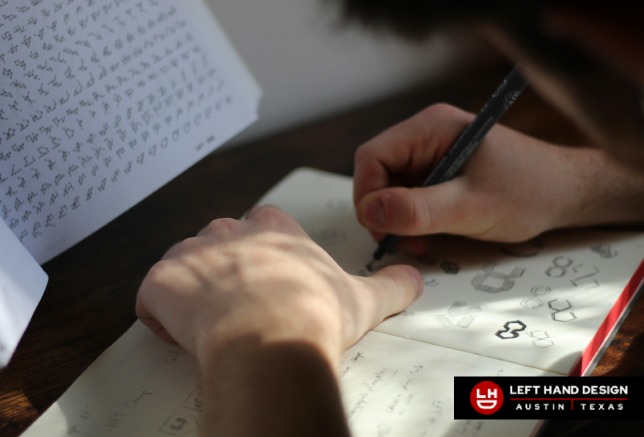As AI-powered logo tools gain traction, the question arises: can machine-generated marks truly replace the strategic insight and creative depth of a human designer? While AI can accelerate early ideation, the nuanced craft of brand-building remains firmly in human hands.
Your Texas business deserves the best. Explore our professional logo design services in Austin, Houston, Dallas, and San Antonio.
What AI Logo Tools Actually Do
AI logo generators rely on vast libraries of existing designs and machine-learning algorithms to recombine shapes, colors, and typography based on user prompts. By analyzing patterns across millions of logos, these platforms quickly produce variations that match keyword inputs—yet they often default to generic templates that lack the bespoke nuance of a custom design.
Where AI Helps (Narrowly)
-
AI excels at rapid mood-board creation and rough concept generation, giving teams a visual jumping-off point without hours of manual sketching.
-
For internal brainstorming, designers can feed AI dozens of prompts to explore color palettes or layout ideas, using the results as loose inspiration rather than final assets.
These tactical uses save time early on—but they don’t produce a finished logo ready for public launch.
The Critical Gaps AI Can’t Close
Creativity Beyond Training Data
AI algorithms generate novel combinations of existing elements, but they lack the ability to synthesize truly original metaphors or symbols that resonate on an emotional level. In contrast, experienced designers draw on cross-disciplinary influences—art history, psychology, even local culture—to craft logos that tell a story unique to each brand.
Cultural, Market, and Audience Nuance
A human designer can interpret subtle audience behaviors, regional color associations, and industry trends in ways AI cannot. For example, a color considered vibrant and positive in one culture might carry negative connotations elsewhere—insights that require human research and empathy.
Strategic Discovery and Positioning
Great logo design begins long before the first sketch. Workshops, stakeholder interviews, and competitive audits uncover a brand’s essence, values, and market positioning. AI skips this discovery phase, risking logos that look polished but fail to align with core business goals.
Legal Clarity and Ownership
With AI-generated logos, the provenance of each design element can be ambiguous. Copyright questions arise over training-data sources, and trademark offices may challenge AI-created marks due to questions of authorship. Human-crafted logos offer clearer ownership and stronger defensibility in registration (JurisLaw, 2025).
Craft and Implementation
Production-ready logos require precise vector files, usage guidelines, and responsive variants for digital, print, and environmental applications. Designers build robust systems—grids, spacing rules, color palettes, and typography hierarchies—that ensure consistency at every touchpoint. AI tools rarely export full design systems, leaving gaps in brand application.
Why Human Designers Are Indispensable
Storytelling and Emotion
Designers translate a brand’s mission and values into visual symbols that evoke emotion and foster memorability. A human touch can infuse a logo with personality, whether through custom lettering or subtle metaphorical cues that transcend literal representation (ScienceDirect, 2020).
Bespoke Execution
From hand-drawn sketches to refined vector art, designers can craft letterforms and iconography tailored precisely to a brand’s narrative. This bespoke approach ensures logos stand apart from the cookie-cutter outputs of AI templates.
Accountability and Iteration
Collaboration with a designer means ongoing refinement: user testing, stakeholder feedback, and evolutions over time. Designers act as brand stewards, updating and protecting logos as companies grow and markets shift—something AI alone cannot manage.
A Hybrid Workflow That Works
The optimal approach blends AI’s speed with human expertise. Use AI generators to spark ideas—experimenting with color schemes and basic layouts—then engage a designer to:
-
Conduct brand discovery and audience research
-
Refine AI drafts into original, strategic concepts
-
Ensure legal clarity and prepare production-ready files
This partnership leverages AI for efficiency while preserving the creativity, strategy, and craftsmanship only humans can provide .
See our logo design work and discover how we turn ideas into unforgettable brands.
Conclusion
AI tools are valuable for quick ideation but cannot replace the full spectrum of skills held by professional logo designers. From strategic discovery and cultural insight to legal defensibility and bespoke execution, human-led design shapes brand equity in ways machines are not equipped to replicate. For truly distinctive and defensible logos, partnering with an experienced designer remains essential.
Don’t settle for automated design. Partner with Left Hand Design to create a logo built on strategy, story, and genuine craftsmanship—100% human, 0% AI.
FAQ
Can AI-generated logos be trademarked?
Trademark offices often require evidence of original authorship and may question AI-created marks due to unclear training-data provenance. Human-crafted logos provide clearer ownership documentation, simplifying registration and enforcement.
Is AI good enough for a real brand?
While AI can produce surface-level designs quickly, strategic brands need audience research, testing, and nuanced craft to avoid generic or culturally misaligned logos.
Who owns an AI-generated logo?
Ownership policies vary by platform. Ambiguities around whether AI or the user holds copyright can create legal risks; work created by a human designer typically includes explicit ownership agreements.
What files should a professional logo include?
A complete logo package contains vector master files (e.g., .ai, .svg), responsive variants, color-usage guidelines, and typography rules to ensure consistent application across media.
How do I blend AI with human design?
Treat AI as a brainstorming partner: use it for initial concept generation, then collaborate with a designer to validate strategy, enhance originality, resolve legal issues, and produce production-ready assets.
